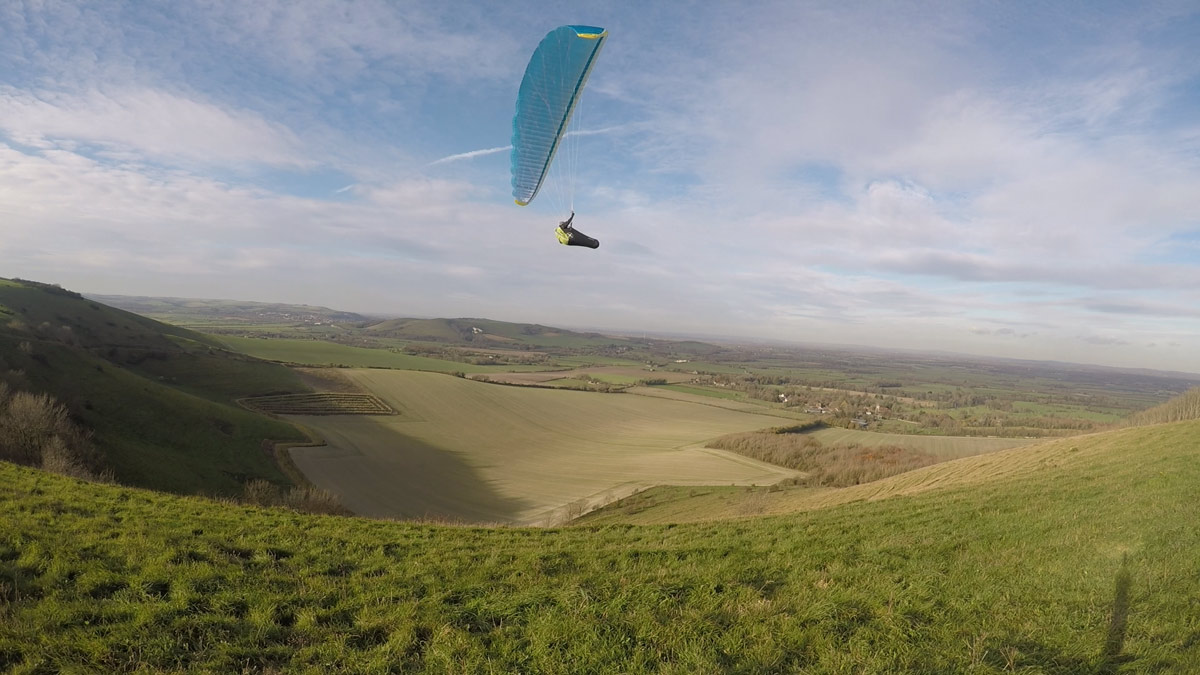
The Mentor series is well established. According to Nova, "For many years the MENTOR has been setting the standard for XC-intermediate wings. It combines impressive performance with a high degree of passive safety and it encourages you to exceed your boundaries." Every edition has promised more performance.
I flew the Nova Mentor 5 S (80-100kg) at 91kg. Based on my experience I would recommend flying this wing closer to the top of the weight range to improve speed and handling.
Mentor 5 construction
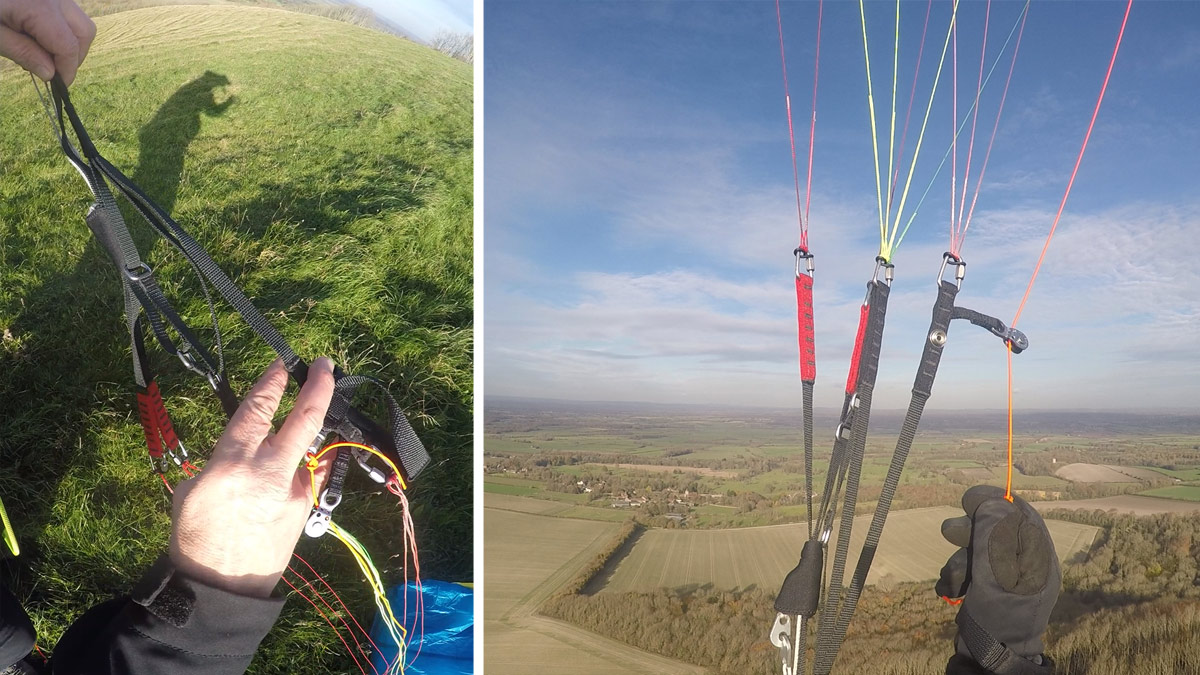
The risers appear functional, slimline and basic, with poppers for the brakes, maillons with rubber O rings, and standard black webbing. The brakes are flexible and the brake lines pass through a pulley. The risers have 3 As, 3 Bs + stabilo, 3 Cs. The lines are sheathed, but feel very thin in the hand, especially the unsheathed rear lines and brakes. As with any performance design, care needs to be taken on rough terrain.
An optional extra is the speedbrake risers, which I would recommend as they offer efficient rear riser control for accelerated flying. Having said that, it's unlikely that you'll need to control the pitch on this wing, because it is incredibly pitch stable.
The leading edge is reinforced by the ubiquitous flexible plastic rods that cross over to provide some rigidity to the ribs near the cell openings.
Launching the Mentor 5 in strong wind
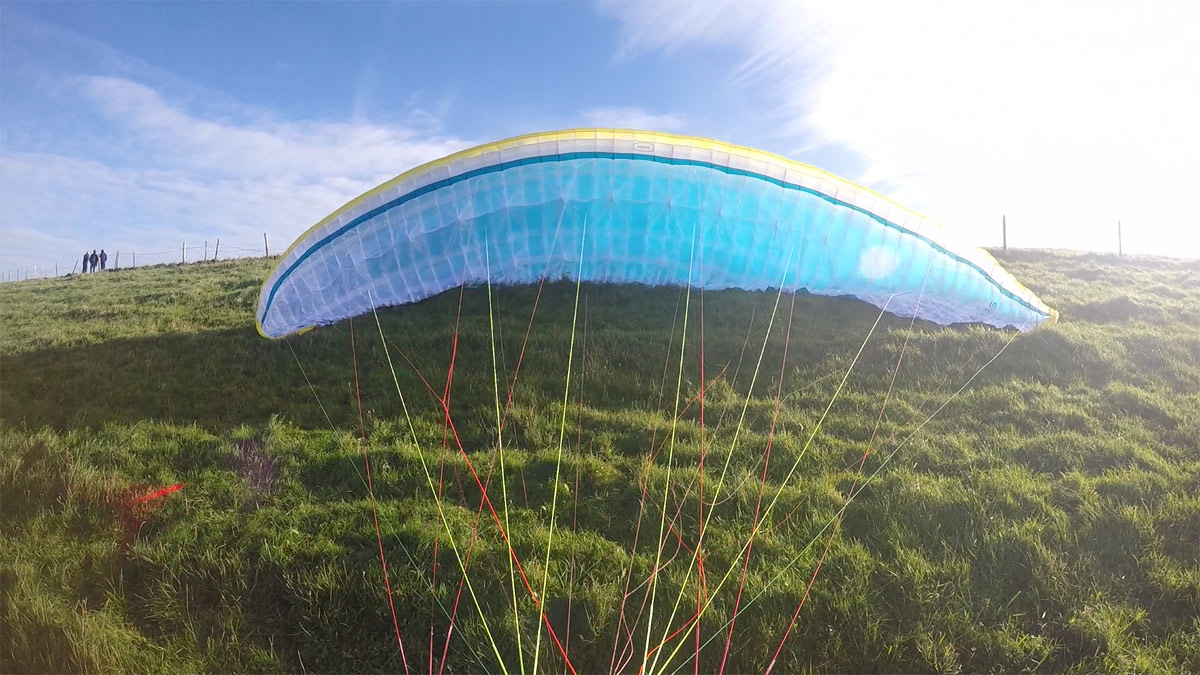
Building a wall using the As and Cs worked well, and the wing can be held down nicely on the Cs. The wing does not seem suited to launching using rear riser control without the As, as it has a sharp stall on the C risers, so it is recommended that you use the As and Cs technique, or As and brakes, combined with running towards the wing.
Mentor 5 Handling
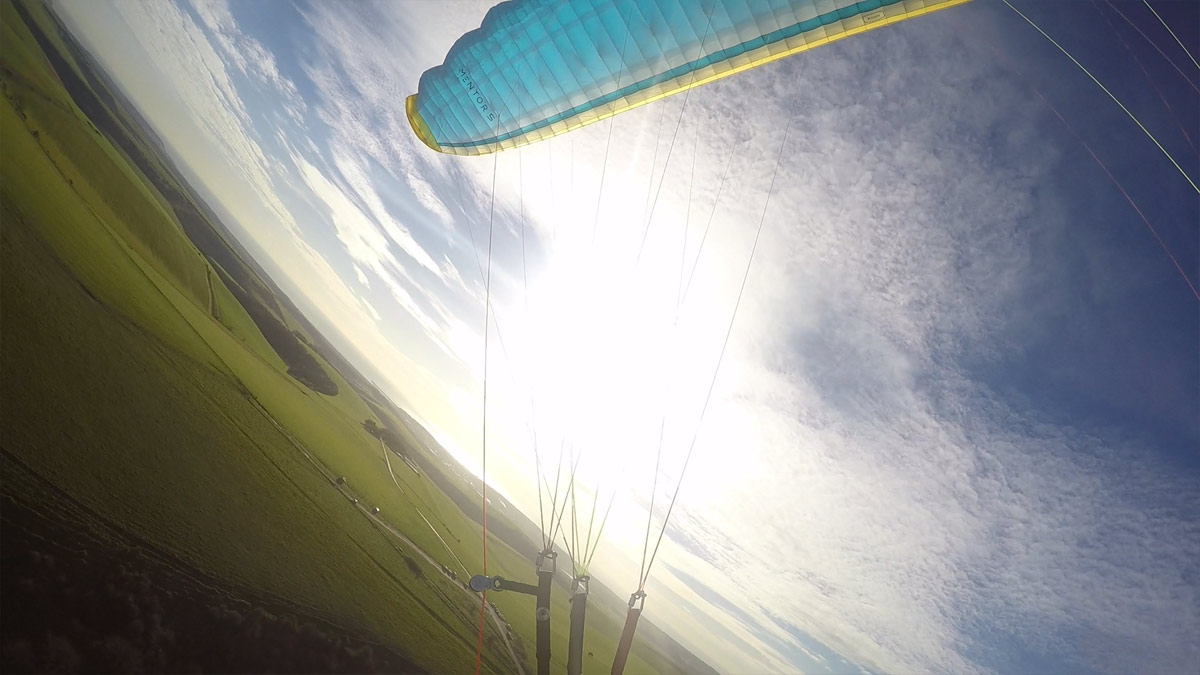
Passing through the air, the wing feels completely smooth. It moves in one block, fairly rigid and undeformed by currents, but because of this stability the bumps are transferred to the pilot, without much in the way of information about where the bumps are coming from.
Normal turns are slow and steady, with a slightly spongy feel on the brakes. Due to the low aspect, the Mentor 5 has a small enough turning radius, but it doesn't feel agile.
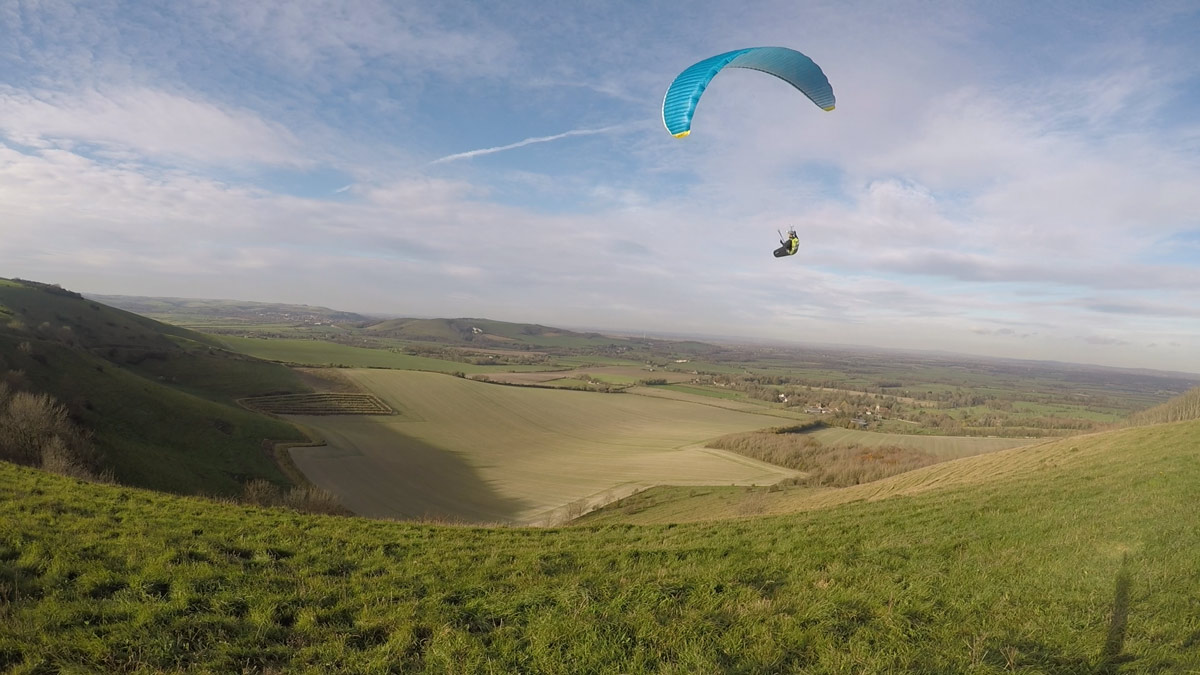
Pushing the turn harder, you get a rapid increase in dive and energy, which leads to a fast spiral. Exiting from this the wing pitches back, climbs fast, then shoots ... and is calmed by its high pitch damping behaviour.
(This pitching-back behaviour might apply to entering thermals, but I will have to wait until Spring to find such uplifting air currents).
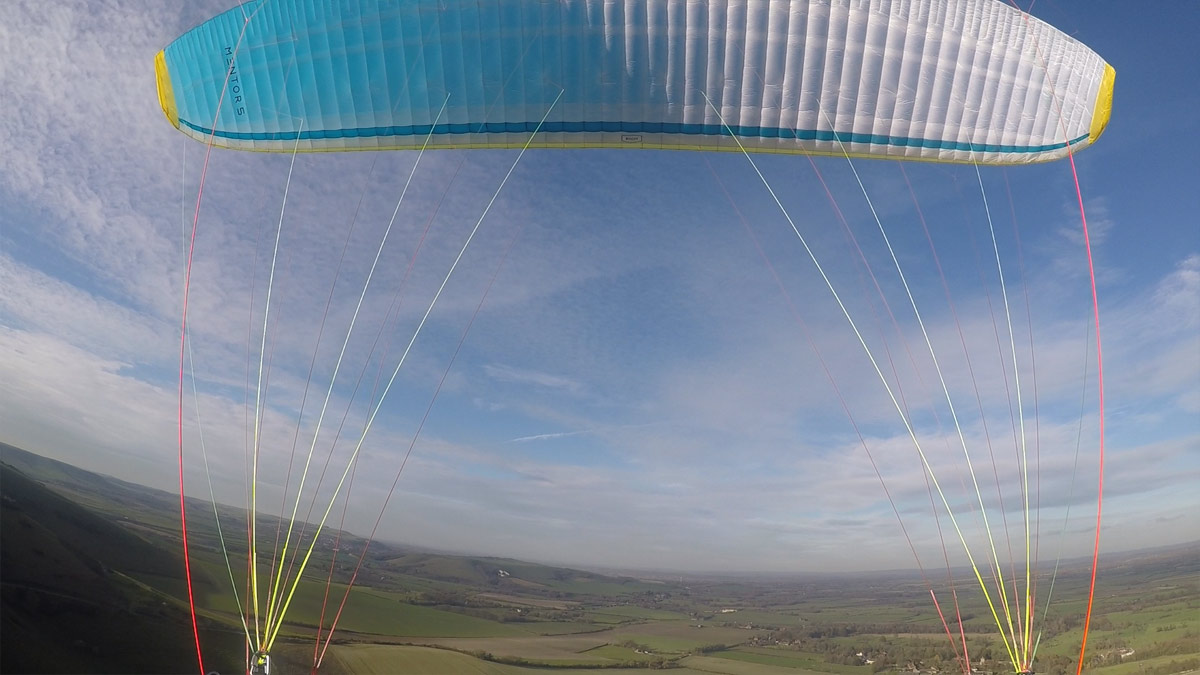
This Mentor has a large amount of pitch damping. It rarely moves from its overhead position. This reduces the feeling of the air ahead of the pilot, and can be frustrating for those who want a wing they can call 'playful' or 'alive', but when flying in rowdy conditions this calm nature will be welcomed by many newcomers to the class. A better description of the Mentor 5 would be 'mellow'.
Big ears
Moderate descent is possible with the outer A lines, providing a stable configuration, with or without acceleration. However, care must be taken when trying to manouevre on big ears, especially when larger ears are engaged, because the yaw stability provided to the pilot is greatly reduced. On release, the ears flap themselves open slowly.
Slow flying
Flying on deep brakes is possible, with a large resistance to stalling, although the pressure doesn't ramp up as much as on previous Mentors.
Fast flying
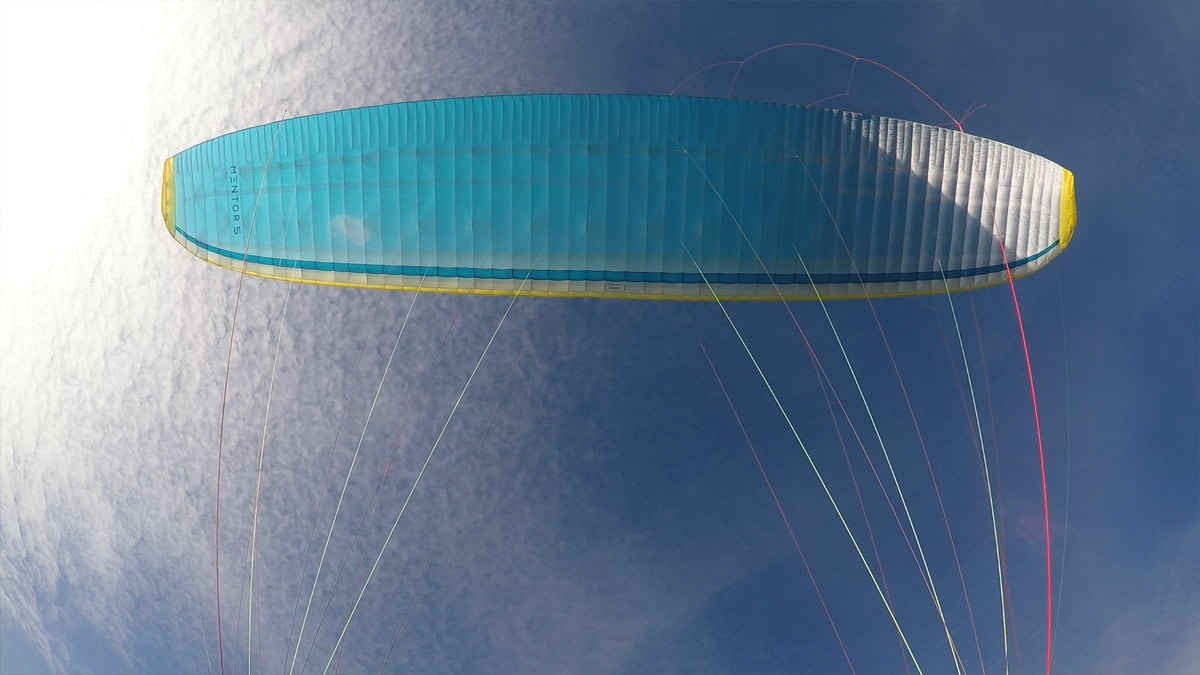
Fully accelerated, the Mentor 5 is similar to previous models in the feeling of being totally stable, a good feature for any pilot that feels nervous about speeding up. Its stability seems to be unaffected by being at full speed or trim speed, I'd expect the resistance to collapses to be about the same. However, with the pulleys locked out I was unable to pass a 10km/h change in speed over trim. As I'm using GPS groundspeed for this measurement it is a very rough guide, but it is certainly not fast.
The Nova Mentor 5 in summary

This wing is suited to pilots with some experience, those wanting to do cross country but at the same time wanting the wing to have maximum passive safety and ability to absorb variations in air currents. The aerofoil copes with a lot of turbulence because it is remarkably stable, but due to its rigidity it transfers some of the bumps to the pilot (as opposed to a more flexible wing that would absorb turbulence). It provides a steady turn, stable acceleration and is a fully-functional modern design optimized for gliding.
Overall, the Nova Mentor 5 is very similar to previous Mentors, with slightly less pitch energy and more smoothing that makes it feel like a low end wing while retaining good performance.
Find out more about the Nova Mentor 5
